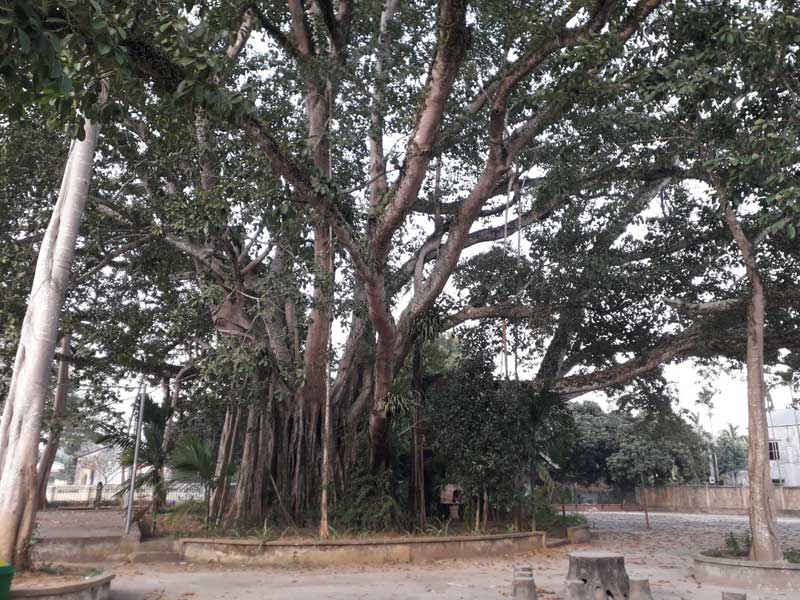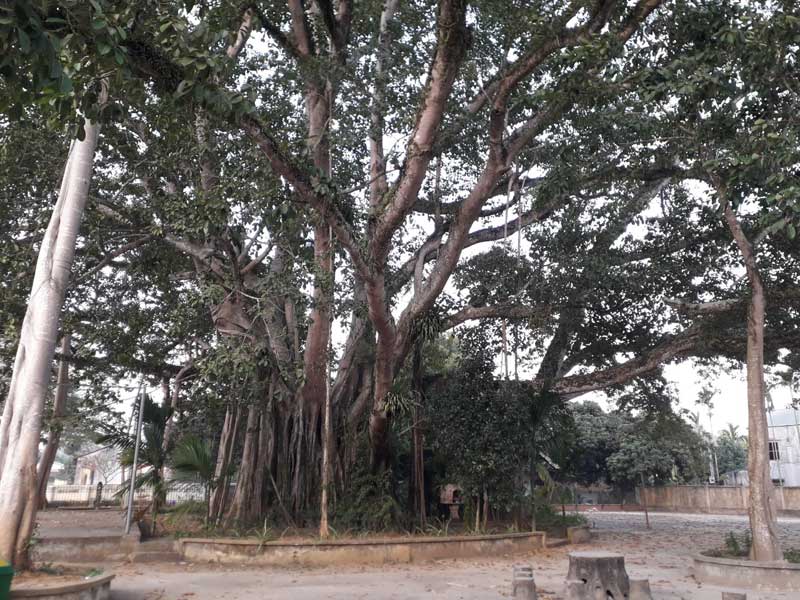
(HBO) - The land of Muong in Hoa Binh is considered as the cradle of the ancient Vietnamese people, containing long-standing and distinctive cultural features with many tangible and intangible cultural values that are preserved and promoted, enriching the image of the hometown.

The ancient banyan tree in Bao hamlet, Thanh Hoi commune (Tan Lac) has been evaluated to meet the criteria for achieving Vietnamese heritage tree by the Department of Cultural and Historical Heritage Preservation and the Department of Biodiversity Conservation.
Up to now, gongs of Muong in Hoa Binh has twice been honored when setting a Vietnamese Guinness record for street gong performances and parades. In particular, the first time is in 2011 on the occasion of 125 years of establishment of the province and 130th anniversary of the establishment of the province with the performance of 2,000 artisans and artists inside and outside the province. The sound of gongs echoes and converges the cultural quintessence of 4 Muong: Bi, Vang, Thang, Dong, creating power, good impression of a friendly and hospitable Hoa Binh.
The old banyan tree in Bao hamlet, Thanh Hoi commune (Tan Lac) has also been evaluated to meet the criteria for achieving Vietnamese heritage tree by the Department of Cultural and Historical Heritage Preservation and the Department of Biodiversity Conservation. This banyan tree has a strong vitality with time, converging the spiritual and cultural values of Muong Bi land. In the mind of the local people, the banyan tree is to bring reproduction, bloom, good luck, good crops and peaceful life.
The Week of Culture - Tourism of Hoa Binh Province in 2019 has just been organized. The province has established the biggest special food tray on leaves of Vietnam. They have organized a lot of cultural activities with distinguishing identity, introducing the land, the culture, the people and the beautiful nature as well as promoting the tourism potential of the province to a large number of tourists from all over the country and overseas.
In particular, the special food tray on leaves is the convergence of the exquisite cultural beauty in the culinary life of Muong people in Hoa Binh. It is the subtlety in the way the food is processed, the form of arrangement and presentation which are in the harmony with nature. Every food, every dish is very specific, imbued with the culture of Muong ethnic people. The steamed vegetables (Dom vegetables, grapefruit leaves, wild tomatoes, different other kind of leaves, lettuce vegetables, young litchi fruits ...) are cooked in such a way that they ensure the sweetness, retaining the natural flavour, acidity, acridness, when being dipped with ginger salt water, both sweet and spicy flavour can be created, which is a valuable remedy for the body.
All kinds of pork, chicken, fish of the local people, which are raised and caught by themselves, ensure the cleanness and the freshness. The sticky rice is the quintessence of heaven and earth, the product made from the industrious hand of human beings. The sticky rice of Muong must be steamed in a new wooden jar so that it is airtight and fragrant. When the sticky rice is on the disc, it is emitted like a flower, showing prosperity and fullness ... On the occasion of the New Year, the special food tray on leaves is placed on the altar to worship the God, the ancestors, praying for a good rainy year, a good harvest and good health for people to make more rice and corn. After the worshiping ceremony, the whole family or the whole village gathers around the special food tray on leaves to enjoy the traditional dishes, wishing each other good health and well-being.
The deputy Director of Department of Culture, Sports and Tourism, Mr. Luu Huy Linh says Hoa Binh is an ancient Muong land with special and precious cultural values that are treasured and preserved in the lives of ethnic minorities and increasingly promoted, giving an important contribution to creating a richness for the Vietnamese ethnic community.
With an increasingly vibrant and widespread emulation movement aimed at building cultured residential areas and cultured families, Yen Thuy District has been making steady progress toward improving both the material and spiritual well-being of its people, while fostering a civilized, prosperous, beautiful, and progressive community.
Once lacking recreational spaces and community facilities, Residential Group 2 in Quynh Lam Ward (Hoa Binh City) has recently received attention for the construction of a new, spacious, and fully equipped cultural house. The project followed the model of state support combined with public contributions in both labor and funding.
The "All people unite to build cultural life" movement, which has been effectively integrated with Kim Boi district’s socio-economic development goals, is fostering a lively spirit of emulation across local residential areas, hamlets, villages, public agencies, and enterprises. In addition, through the initiative, traditional cultural values are being preserved and promoted, while community solidarity and mutual support in poverty reduction and economic development are being strengthened.
A working delegation of the Hoa Binh provincial People’s Committee led by its Permanent Vice Chairman Nguyen Van Toan on June 11 inspected the progress of a project to build the Mo Muong Cultural Heritage Conservation Space linked to tourism services in Hop Phong commune, Cao Phong district.
Born and growing in the heroic land of Muong Dong, Dinh Thi Kieu Dung, a resident in Bo town of Kim Boi district, in her childhood was nurtured by the sweet lullabies of her grandmother and mother. These melodies deeply imprinted on her soul, becoming an inseparable part of her love for her ethnic group's culture. For over 20 years, this love for her hometown has driven Dung to research, collect, and pass down the cultural values of the Muong people to future generations.
In the final days of May, the Ethnic Art Troupe of Hoa Binh Province organized performances to serve the people in remote, mountainous, and particularly disadvantaged areas within the province. These were not just ordinary artistic shows, but they were the meaningful journeys aimed at spreading cultural values, enhancing the spiritual life of the people and contributing to the preservation of ethnic minority cultural identities.



